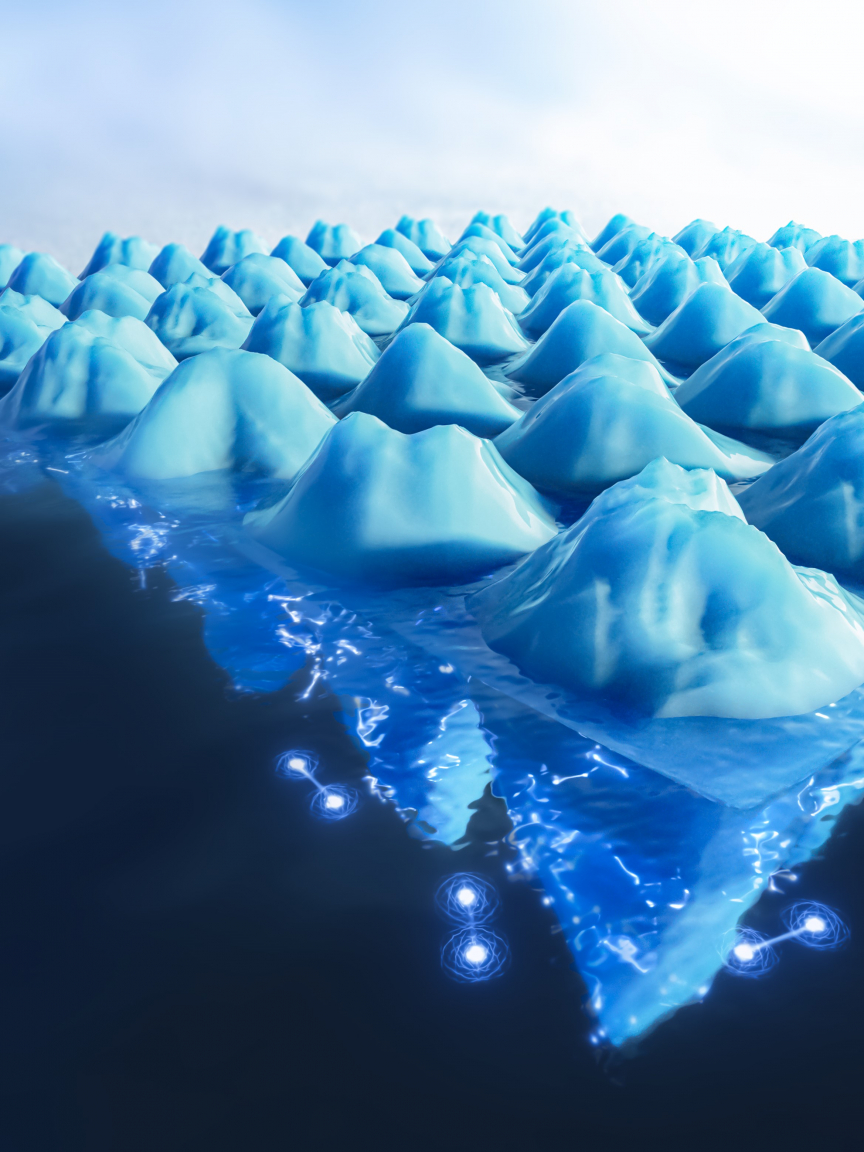Aug 13 2020
Graphene is a very thin two-dimensional (2D) layer form of graphite that is used in pencils. This material tends to buckle when cooled after attaching to a flat surface.
 Simulated mountain and valley landscape created by buckling in graphene. The bright linked dots are electrons that have slowed down and interact strongly. Image Credit: Yuhang Jiang.
Simulated mountain and valley landscape created by buckling in graphene. The bright linked dots are electrons that have slowed down and interact strongly. Image Credit: Yuhang Jiang.
A new Rutgers-led study described in the Nature journal reports that such a cooling process leads to the formation of attractive pucker patterns that could be useful in the quest for innovative quantum materials and superconductors.
Quantum materials are made of electrons that strongly interact and exhibit unique properties, such as entangled trajectories, which could offer building blocks for super-fast quantum computers. Moreover, they can act as superconductors that could reduce energy consumption by rendering electronic devices and power transmission more efficient.
“The buckling we discovered in graphene mimics the effect of colossally large magnetic fields that are unattainable with today’s magnet technologies, leading to dramatic changes in the material’s electronic properties,” stated lead author of the study Eva Y. Andrei, Board of Governors professor in the Department of Physics and Astronomy in the School of Arts and Sciences at Rutgers University – New Brunswick.
Buckling of stiff thin films like graphene laminated on flexible materials is gaining ground as a platform for stretchable electronics with many important applications, including eye-like digital cameras, energy harvesting, skin sensors, health monitoring devices like tiny robots and intelligent surgical gloves.
Eva Y. Andrei, Study Lead Author, Rutgers University
“Our discovery opens the way to the development of devices for controlling nano-robots that may one day play a role in biological diagnostics and tissue repair,” added Andrei.
The researchers investigated buckled graphene crystals, properties of which tend to vary radically upon being cooled. This leads to the advent of typically new materials with electrons that slow down, become aware of each other, and interact strongly, giving rise to intriguing phenomena such as magnetism and superconductivity, stated Andrei.
The team used high-tech imaging and computer simulations to demonstrate that graphene positioned on a flat surface made of niobium diselenide tends to buckle upon being cooled to 4° above absolute zero.
The mountain and valley landscape formed due to the buckling appears to the electrons in graphene as gigantic magnetic fields. Although the pseudo-magnetic fields are an electronic illusion, they serve as real magnetic fields, says Andrei.
Our research demonstrates that buckling in 2D materials can dramatically alter their electronic properties.
Eva Y. Andrei, Study Lead Author, Rutgers University
The next steps of the research include creating new strategies to design buckled 2D materials with innovative mechanical and electronic properties that could be advantageous in quantum computing and nano-robotics, noted Andrei.
Jinhai Mao, a researcher at the University of Chinese Academy of Sciences who was formerly a research associate in the Department of Physics and Astronomy, is the first author of the study. Rutgers co-authors of the study are doctoral student Xinyuan Lai and a former post-doctoral associate, Yuhang Jiang, who is presently a researcher at the University of Chinese Academy of Sciences.
Slaviša Milovanović, who headed the theoretical part of the study, is a graduate student collaborating with professors Lucian Covaci and Francois Peeters at the Universiteit Antwerpen. Researchers at the University of Manchester and the Institute of Material Science in Tsukuba Japan also contributed to the study.
Journal Reference:
Mao, J., et al. (2020) Evidence of flat bands and correlated states in buckled graphene superlattices. Nature. doi.org/10.1038/s41586-020-2567-3.